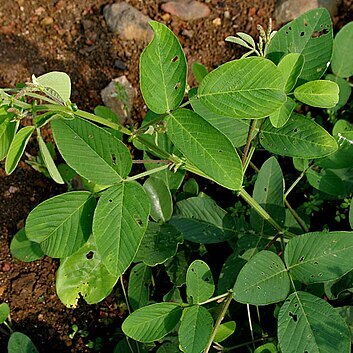An annual herb. It tends to lie along the ground or be slightly climbing. It grows 40-100 cm tall. The leaves have 3 leaflets. The leaflets are 3-8 cm long by 2-4 cm wide. There are hairs underneath. The flowers are small and yellow. The pods are small.

